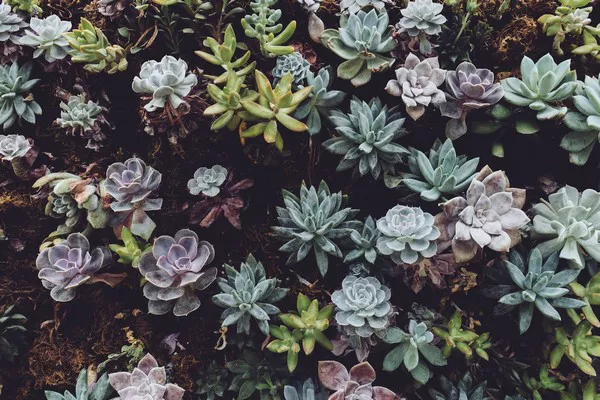Succulents are beloved for their ability to thrive in arid conditions, but the changing seasons, especially winter, can pose challenges to these remarkable plants. As temperatures drop and daylight hours shorten, succulents require special care to ensure their survival and continued beauty.
Understanding the Needs of Wintering Succulents
Before diving into the specific strategies for wintering succulents, it’s essential to comprehend why these plants require different care during the colder season.
Succulent Resilience: Succulents are adapted to harsh climates and can store water in their leaves, stems, and roots. These water reserves help them survive in hot, dry conditions. However, during winter, excess moisture and freezing temperatures can be detrimental to succulents, causing rot and damage.
Reduced Sunlight: Shorter days in winter mean reduced sunlight, which can affect the growth and health of succulents. These plants typically thrive in bright, indirect light, so adjusting their lighting conditions is crucial.
Temperature Fluctuations: Succulents are sensitive to temperature fluctuations, especially freezing temperatures. Keeping them warm and protected is vital to ensure their well-being.
Dormancy Period: Many succulent species go through a dormant period in winter when they slow down their growth and require less water. Recognizing this natural cycle is essential for providing the right care.
Indoor vs. Outdoor Succulents: The winter needs of succulents can differ based on whether they are grown indoors or outdoors. It’s important to understand the distinctions to provide the appropriate care.
Wintering Succulents Indoors
Lighting
Succulents rely on adequate light for photosynthesis, but winter’s shorter days can limit sunlight exposure. Consider the following:
South-Facing Windows: Place succulents near south-facing windows to maximize the amount of indirect sunlight they receive.
Supplemental Lighting: Use grow lights to compensate for reduced daylight hours. Position the lights approximately 6-12 inches above the plants and keep them on for about 12-14 hours per day.
Temperature and Humidity
Maintaining suitable indoor temperatures and humidity levels is essential for wintering succulents indoors:
Temperature: Keep the indoor temperature between 50-60°F (10-15°C). Avoid sudden temperature changes and drafts, as these can stress the plants.
Humidity: Indoor heating systems can reduce humidity levels. To counter this, use a humidity tray or a room humidifier to maintain a comfortable level for your succulents.
Watering
Adjust your watering routine to accommodate the dormant period of many succulent species:
Reduce Watering: Succulents need less water during winter. Water only when the soil is dry to the touch. Ensure that the pots have proper drainage to prevent root rot.
Watering Technique: When watering, use the soak-and-dry method. Water thoroughly until it runs out of the drainage holes, then let the excess water drain away.
Pests and Diseases
Inspect your succulents regularly for signs of pests, such as mealybugs and scale, which may be more prevalent indoors during winter. Isolate infected plants and treat them promptly to prevent infestations.
Wintering Succulents Outdoors
Protection from Frost
Succulents that remain outdoors during winter require special care to protect them from frost:
Cover: Use frost cloths or blankets to cover succulents during freezing nights. Remove the covers during the day to allow access to sunlight.
Elevate Containers: If your succulents are in containers, raise them off the ground or place them on insulating materials to prevent cold damage.
Move Vulnerable Plants: If you have succulents in the ground that are particularly sensitive to cold, consider moving them into pots and bringing them indoors.
Well-Draining Soil
Ensure that the soil in your outdoor succulent beds or containers is well-draining to prevent waterlogged roots. Mixing sand or perlite into the soil can enhance drainage.
Reduce Watering
Like indoor succulents, outdoor succulents also need less water during the winter:
Rainfall: In areas with frequent winter rainfall, monitor the moisture level in the soil. Only water when the soil is dry to the touch.
Avoid Overhead Watering: Water directly at the base of the plants to avoid wetting the leaves, which can lead to rot.
Container Placement
If your outdoor succulents are in containers, consider moving them to sheltered areas, such as under eaves or near walls, to protect them from harsh winter winds and cold temperatures.
Transitioning Succulents
In regions with mild winters, some succulents can thrive outdoors throughout the year. However, in colder climates, transitioning them to their winter environment is essential:
Gradual Transition: If you’ve kept your succulents outdoors during the growing season, begin transitioning them indoors or to a protected outdoor location in the early fall. This gradual change helps them acclimate to the changing conditions.
Inspect for Pests: Before bringing your succulents inside, inspect them for pests and remove any unwanted visitors. Treating them for pests prior to transitioning them is advisable.
Repot if Necessary: If your succulents have outgrown their containers or appear root-bound, consider repotting them in slightly larger pots before winter.
Light Adjustment: If you’re moving succulents indoors, ensure they receive adequate light by placing them near south-facing windows or using grow lights.
Dormancy Period: Understand that your succulents may go through a dormancy period, and their growth may slow down during the winter. Be patient and avoid overwatering.
Conclusion
Wintering succulents successfully requires a keen understanding of their unique needs and the ability to adapt your care regimen to the changing season. Whether you’re growing succulents indoors or outdoors, the key to maintaining their health and beauty during the colder months lies in providing appropriate lighting, temperature, and watering, and protecting them from frost and pests.


